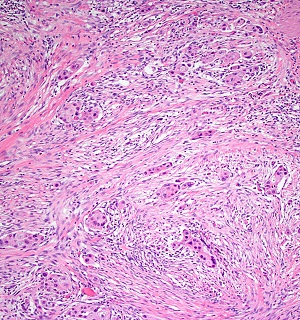Diagnosis
Diagnosis
Wilmot Cancer Institute provides the full spectrum of bladder cancer care, from initial diagnosis and treatment to recovery and rehabilitation. Bladder malignancies are in a group known as genitourinary (GU) cancers, and Wilmot offers the most comprehensive, advanced care for GU cancers in the region.
We work in multidisciplinary teams. "Multidisciplinary" means that our care providers include experts with a variety of specialties: surgeons, urologists, medical oncologists, radiation oncologists, pathologists, radiologists, nurse practitioners, social workers, and clinical researchers. They work together on your case to provide the most personalized care possible.
Symptoms
Getting an accurate diagnosis is essential to getting the best treatment. Blood in the urine is usually the first sign of bladder cancer. The color can be orange, pink, or red, and the blood can be present one day and absent the next. Blood doesn’t always point to cancer, but it’s important to have it checked immediately. In women, blood in the urine can be misdiagnosed as a urinary tract infection or post-menopausal bleeding due to other causes, so it’s important for women to monitor all symptoms they might be having.
Other symptoms include:
- Changes in urination habits such as pain while urinating or a frequent, urgent need to urinate
- Being unable to urinate
- Lower back pain
- Weight loss without trying and loss of appetite
- Fatigue
- Swelling in the feet
Screening
Doctors don’t recommend routine screening for the general population because no test has been shown to lower the risk of dying from bladder cancer. However, some people at very high risk might benefit from a urinalysis or other newer tests that can look at cells, chromosome changes, or other substances in the urine that suggest cancer.
How is bladder cancer diagnosed?
 Medical history and physical examination: This includes a complete medical history and assessment of risk factors and symptoms. The physical exam will look for general signs of health. Doctors might perform a digital rectal exam on men and a pelvic examination on women. If the results are abnormal other tests will be conducted and you will likely be referred to a urologist.
Medical history and physical examination: This includes a complete medical history and assessment of risk factors and symptoms. The physical exam will look for general signs of health. Doctors might perform a digital rectal exam on men and a pelvic examination on women. If the results are abnormal other tests will be conducted and you will likely be referred to a urologist.
Urine lab tests: These include a urinalysis (checking for blood); urine cytology (checking for pre-cancer or cancer cells); urine culture (checking for infection); and/or urine tumor marker tests (checking for other substances in the bladder that indicate cancer is present). The urine cytology test is usually the best way to find cancer.
Cystoscopy: A cystoscope is a thin, flexible tube with a light and video camera on the end. Doctors can place it into the bladder and examine its lining. Sometimes a light-activated drug is also placed in the bladder to illuminate cancer cells.
Transurethral resection of bladder tumor (TURBT): This test is similar to a biopsy; doctors remove a small sample of tissue and a pathologist examines it under a microscope to look for signs of cancer. Because bladder cancer can develop in several different areas of the organ, multiple samples are often removed during a TURBT procedure. Sometimes the entire tumor can be removed during the TURBT.
Intravenous pyelogram (IVP): This involves a series of x-rays of the bladder and surrounding organs using a contrast dye that can indicate if blockages are present in the bladder, kidneys, or ureters.
Other imaging: This might include CT scans, MRIs, ultrasounds, or bone scans. Each of these tests will provide detailed pictures of the bladder and related tissue.